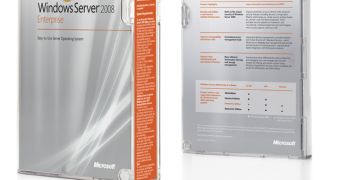Well, it's right about time that you gear up for Windows Server 2008. Microsoft is in the final stages of development of its last 32-bit server operating system. Windows Server 2008, formerly codenamed Longhorn, is currently approaching the RTM stage at fast pace. Although no official confirmation was offered by the Redmond company, the server platform is reported to be in Escrow, the phase that precedes the release to manufacturing. If all goes well, the code for Windows Server 2008 could go gold as early as the beginning of February.
And at the end of the next month, Windows Server 2008 is scheduled for its official launch at the Heroes Happen Here event in Los Angeles. February 27, 2008 will mark the simultaneous release of Windows Server 2008, SQL Server 2008 and Visual Studio 2008. At this point in time, you will be able to get a taste of the near-final version of Windows Server 2008 via the latest release candidate made available by Microsoft in December 2007, alongside the Windows Vista Service Pack 1 Release Candidate 1. Windows Server 2008 RC1 is available for download via this link.
At the same time, the successor of Windows Server 2003 represents a major evolution. In this regard, Microsoft has made available for download a consistent volume of documentation that will enable users to take full advantage of the server operating system. An impressive list of Windows Server 2008 step-by-step guides is available for download, providing information on everything from server core installation to Windows Server 2008 Foundation Network. The guides can be accessed via this link.
On top of these guides, you can also get your hands on the documentation made available via TechNet, namely the Windows Server 2008 Technical Library. In addition Nick MacKechnie, a Senior Technical Account Manager in New Zealand, highlights the availability of a variety of resources providing guidance on Windows Server 2008. "Windows Server 2008 Release Candidate helps IT professionals to increase the flexibility and reliability of their server infrastructure while offering developers a more robust web and applications platform for building connected applications and services", MacKechnie stated.

 14 DAY TRIAL //
14 DAY TRIAL //